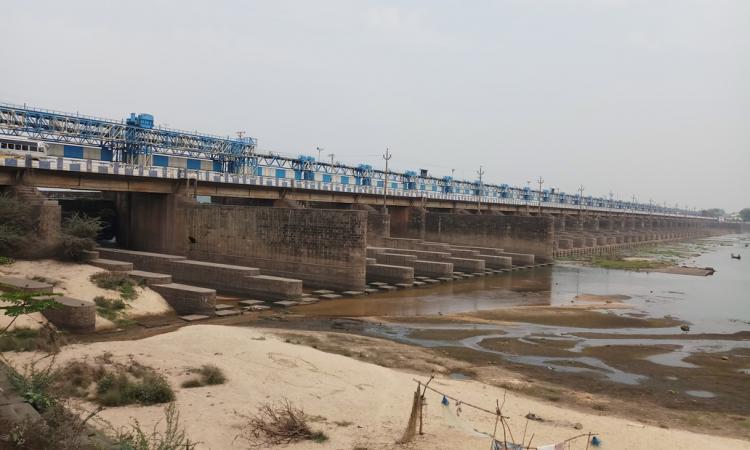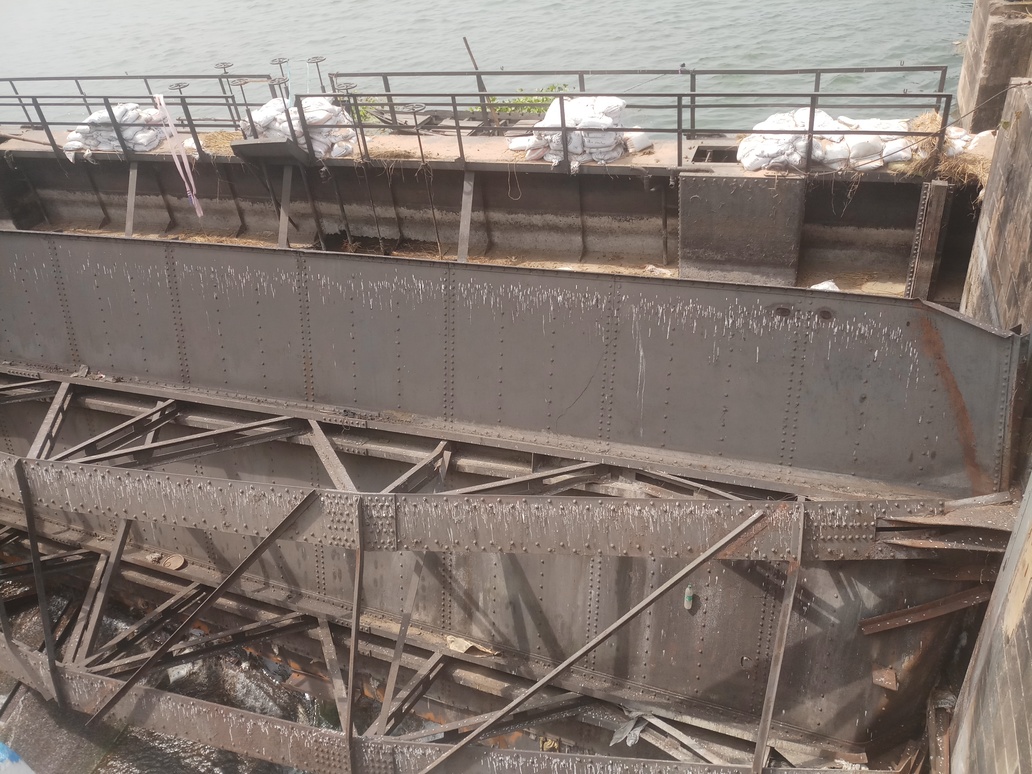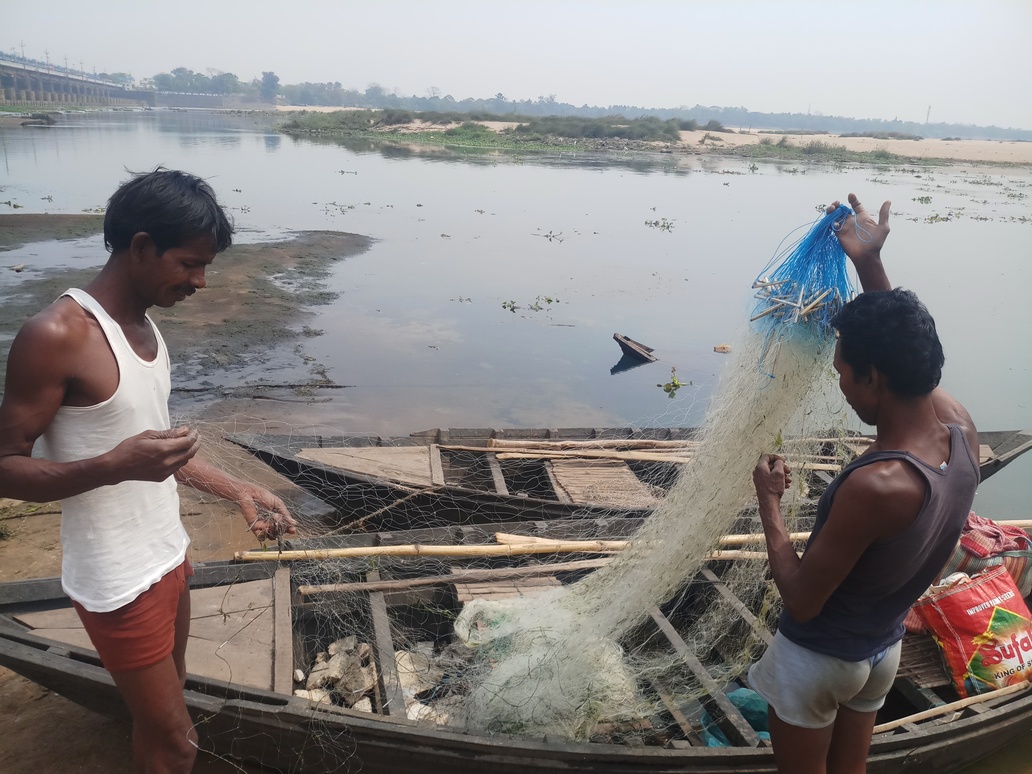
The industrial township of Durgapur, situated 150 km from Kolkata, faced a severe water crisis for two days in November last year when the Durgapur barrage became dry following a leak at one of the lock gates of the barrage. Durgapur barrage is located across the Damodar river at Bankura in Bankura district of West Bengal. It was constructed in 1955.
Several industrial units that depend on the barrage for water supply suffered loss. The situation reached such a point that Durgapur Chemicals Limited, a five-decade-old public sector company, had to shut its operations for a few hours and several health establishments had to purchase water for their patients.
Durgapur township with nearly 5.22 lakh population is dependent on the barrage for water supply. Besides, it is also an important source of water for the agricultural land in the downstream districts of Hooghly, Howrah, Burdwan and Bankura. Water supply to the houses couldn’t be restored for several hours even after the barrage was repaired because the water level was just seven feet whereas at least 12 feet of water was required to release water to the feeder channels leading to the treatment plants in the town. The Durgapur municipal corporation supplied drinking water to different residential areas by bringing in 65 tankers from the Asansol municipal corporation, Bankura municipality and Eastern Coalfields Ltd. Seven officials of the irrigation department were immediately transferred holding them responsible for not informing the administration in time about the need to repair the lock gate.

Durgapur barrage is 692-m long and has 34 gates including two under-sluice gates. It is a 12-m high barrage. The sizes of the gates are 18.3m x 4.9m (60 ft x 16 ft) whereas the sizes of the left and right under sluices are 18.3m x 5.5 m (60 ft x 18 ft). The length of the left bank main canal, originating from the Durgapur barrage is 136.8 km and that of the right bank main canal is 88.5 km. The discharge at the head regulator for the left bank canal is 260 cubic metres (69,000 US gal) per second and that for the right bank canal is 64.3 cubic metres (17,000 US gal) per second.
Barrage needs maintenance
Local residents say that the lack of repairs has taken a toll on the five-decade-old barrage as continued water flow has damaged the iron sheets of the gates and have reduced their thickness. Severe damage to the lock gate number one and the pathetic conditions of other gates of Durgapur barrage have forced the state government to sit up and take note of the situation.
A sense of urgency is clearly visible as the government is constructing three lock gates to keep the backup ready if any gate breaks in the future. “We have already floated the tenders to build three lock gates weighing 24 tons and costing Rs 80 lakh each. Soon, the floating gate at lock gate one would be replaced with a fresh installation but we would keep two extra gates ready in case a similar tragedy strikes in the future. We would install the new gate before the monsoon,” says Amresh Kumar Singh, executive engineer of the Damador head works division under the state irrigation and waterways department.
As a temporary measure to counter the leak, sandbags were kept to check the water flow at gate number one which did not work. The other gates are not in great shape either as neither the repair of gates nor dredging has been done since the barrage was built in 1955. The gate number 34 has completely jammed and has to be replaced. A floating gate has also been installed here. Heavy rainfall during monsoon and a lack of maintenance coupled with no dredging often lead to an increase in the level of water in the reservoirs which, in turn, increase the pressure on the lock gates, causing damage.
Durgapur barrage and the canal network were handed over to the Government of West Bengal in 1965. The responsibility of the maintenance of the barrage lies with the state government. “The administration has taken no serious repair works since its inception. A coating of paint is just being done every year in the name of maintenance. The gates have lost thickness and have become vulnerable due to constant exposure to water. Floating gates are just short-term measures and things can turn disastrous if all the gates are not repaired immediately as monsoon is just a few months away and it is not possible to replace all the gates. We might face severe water crisis and even the industrial and health establishments might also suffer,” says Anjan Poddar, who lives just a few metres away from the barrage.
People fear economic loss
His concern is genuine as several people, particularly the fishing community suffered a grave economic loss after the barrage was made dry last year. Sixty-year-old Niranjan Samaddar bought a new sugarcane crusher, a day after the lock gate broke. “I’ve been catching fish from the barrage for my livelihood for more than 40 years. On an average, I used to earn Rs 20,000-Rs 25,000 per month from fishing but I was completely ruined after the water was removed to install the floating gate. I somehow arranged money and purchased the sugarcane crusher. There are hardly any fish available in the barrage now and the catch has dwindled,” he says in a visibly upset tone.

He is not alone. According to the villagers, a strong community of 2000 fishermen once depended on the barrage but now their numbers have shrunk to 700-800 as several among them like Niranjan have switched jobs or have migrated to other states looking for a better livelihood. People were seen rushing with several kilos of fish after the barrage was made dry.
Singh, however, contests the accusation that the administration is being apathetic. “The work of the new gates is already underway and we are also going to install automated Supervisory Control and Data Acquisition (SCADA) system to close the gates through a control room as manual closure takes around 30 minutes. We have spent Rs two crore on it. The new system will save time and would thus help to minimise the water leakage from the barrage,” he assures.
Apart from the gates, the lack of dredging is another serious issue plaguing the barrage. Sources say that 11 parliamentary committees have visited in the past five decades but still dredging has not been done resulting in 33 percent loss of water capacity of the barrage.
When contacted, state irrigation minister Rajib Banerjee blames the central government for the lack of dredging. “We have sent the detailed project report (DPR) to the Centre regarding dredging but nothing has been done so far. It is not possible for the state to do it because of the shortage of funds,” he says. The Centre, in turn, passes the buck to the state. “The state is unable to provide a proper DPR which is preventing the union government from taking proper action regarding the dredging of Durgapur barrage,” says Uma Bharti, the cabinet minister for drinking water and sanitation.
“The summer is approaching. We need water for our agricultural fields. We could sustain severe losses if water is not supplied through the barrage. We hope that government makes the situation normal,” says Haripada Naskar, a farmer in Hooghly district.
Let’s hope that the buck stops here and something fruitful is done to avert further damage and to help the families dependent on the barrage so they don't go hungry.
/articles/locks-down-barrage-scares-durgapur